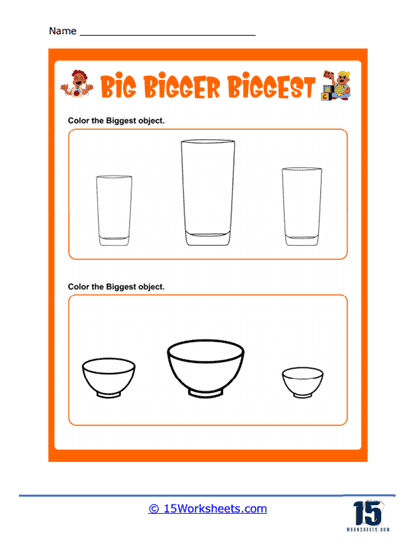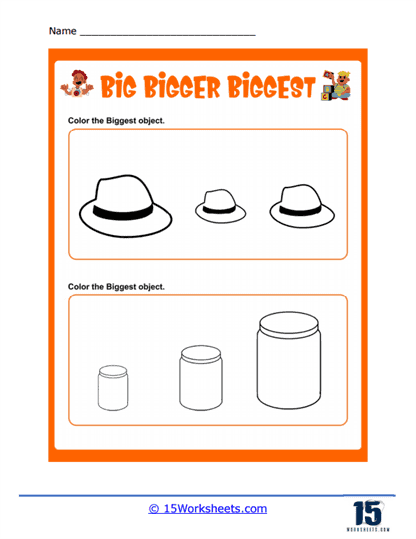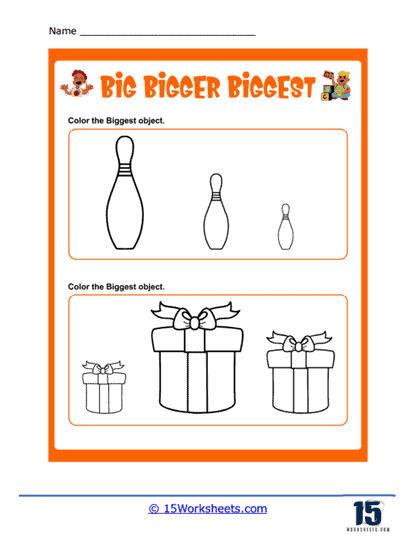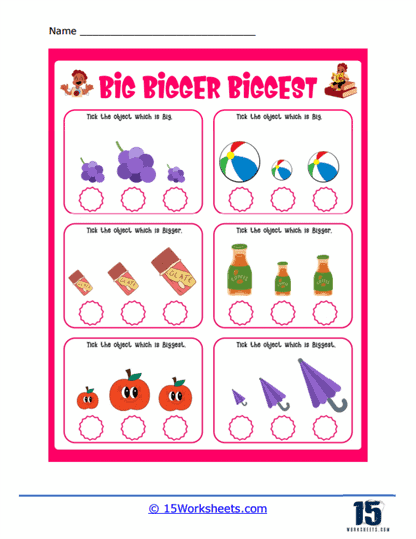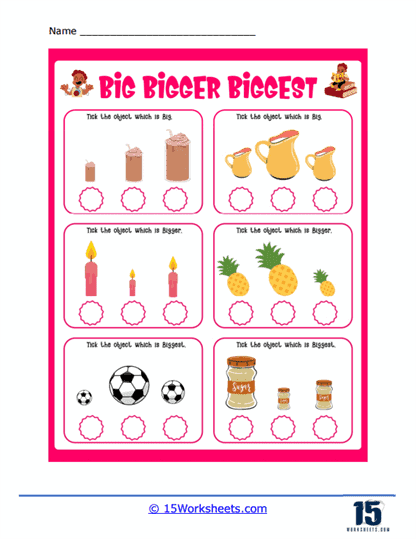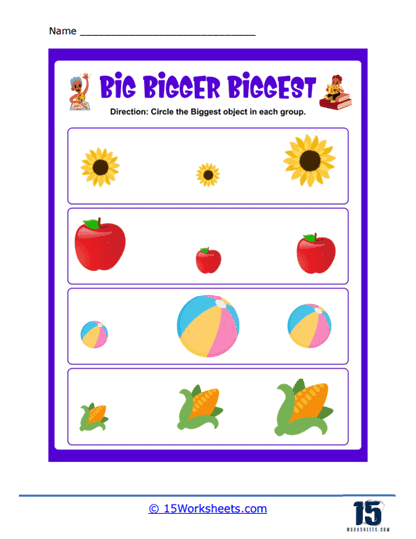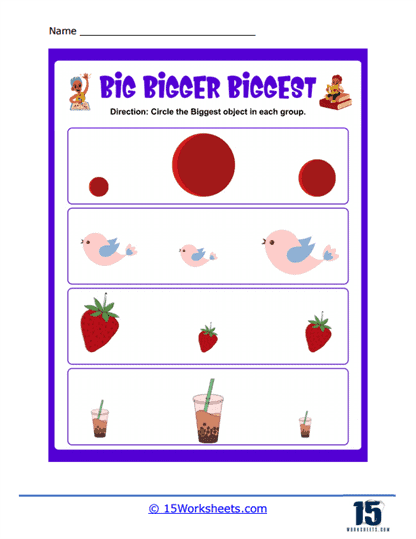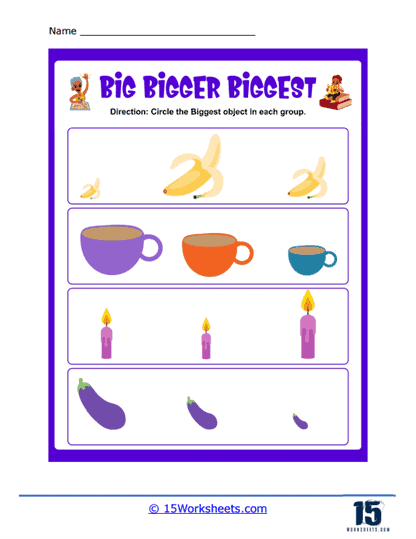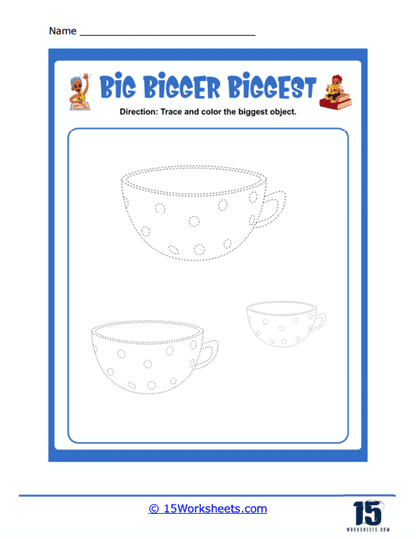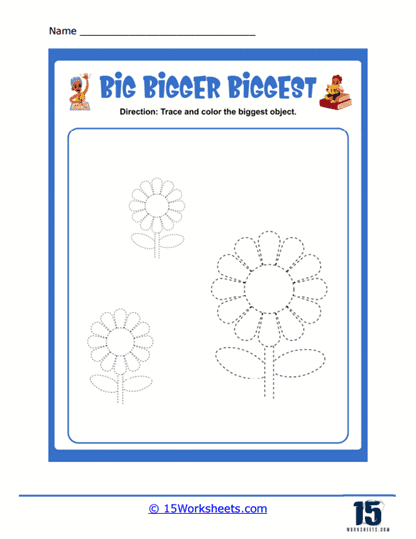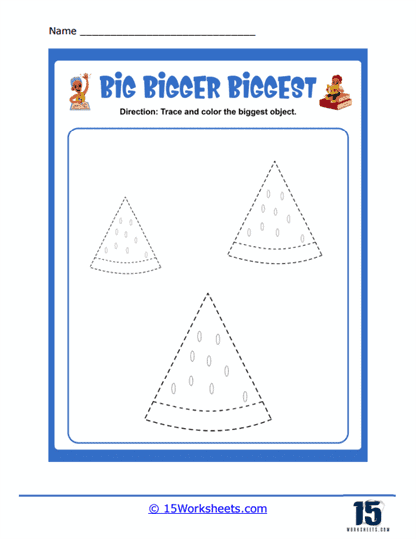Big, Bigger, Biggest Worksheets
How to Compare Objects As Big, Bigger, Biggest
Comparing objects as big, bigger, and biggest is a great way to introduce the concept of size and comparison to young children. You can use various strategies to help children understand these concepts. Here are some suggestions:
Gather Objects – Collect a set of objects of different sizes, such as blocks, toys, books, or containers. Make sure the size differences are noticeable, so it’s easier for children to compare.
Introduce the Terms – Explain the meaning of big, bigger, and biggest. Big refers to something larger than another object, bigger refers to something even larger, and biggest refers to the largest object in a group.
Start with Two Objects – Begin by comparing two objects, one bigger than the other. Ask the child which one is bigger and which one is smaller. This will help them understand the basic concept of comparison.
Add a Third Object – Once the child can successfully compare two objects, introduce a third object that is larger or smaller than the previous two. Ask the child to arrange the objects in order of size, from the smallest to the biggest or vice versa.
Use Descriptive Language – Encourage the child to use descriptive language when comparing objects. For example, they can say, “This toy is bigger than that toy” or “This block is the biggest of all.”
Reinforce with Real-world Examples – Use real-world examples to reinforce the concept of size comparison. For instance, you can compare the size of family members, animals, or vehicles.
Use Visuals – Provide visual aids, such as illustrations or photographs, that demonstrate size comparisons. This can help children understand the concept more easily.
Play Games – Engage children in fun activities or games that involve size comparison. For example, you can play “I Spy” with size comparisons or ask children to find objects in the room that fit the “big, bigger, biggest” categories.
Encourage children to practice comparing sizes regularly. This will help them internalize the concept and become more comfortable with size comparisons. Remember to be patient and provide positive reinforcement as children learn to compare objects as big, bigger, and biggest. This foundational skill will help them develop a better understanding of size and measurement as they grow.

